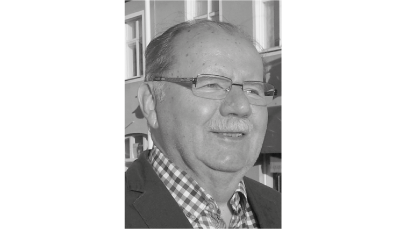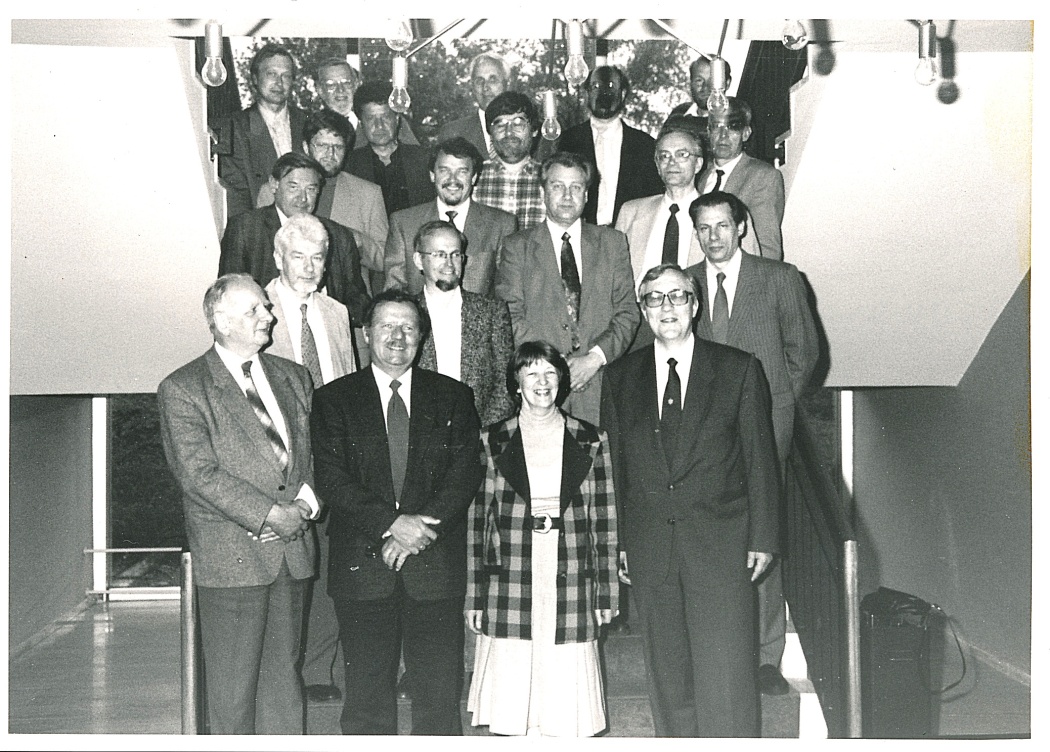Ehrhard Raschke, initiator of BALTEX, deceased
News

Ehrhard studied geophysics at the Bergakademie Freiberg and at the University of Mainz and received his PhD in meteorology from the University of Munich, supervised by Fritz Möller, who was a pioneer in atmospheric radiation research. In 1971, Ehrhard habilitated in meteorology at Ruhr-University Bochum, and became head of the Institute for Geophysics and Meteorology at the University of Cologne in 1973. From 1989 to his formal retirement in 2001, he first headed the Institute of Physics, later the Institute of Atmospheric Physics, both at GKSS Research Center (which is now the Helmholtz-Zentrum Hereon) in Geesthacht, Germany.
For many years after his time in Munich, Ehrhard’s research interest focussed on a better understanding of the atmospheric radiation balance and the quantification of related processes, which included particularly remote sensing and in-situ experiments of clouds and precipitation. He worked internationally right from the beginning of his career. An early pioneering publication – together with US colleagues at Colorado State University and NASA’s Goddard Space Flight Center – quantified „the annual radiation balance of the Earth-atmosphere system during 1969-1970 from Nimbus 3 satellite measurements“ (Raschke et al, 1973). His pioneering activities were internationally recognized, and he became a member of the International Radiation Commission (IRC) and its Working Group on Radiation Fluxes (WGRF) in support of the Joint Scientific Committee (JSC) of the World Climate Research Programme (WCRP). During his time in Cologne, he initiated and coordinated the International Cirrus Experiment (ICE), which was a joint effort of research groups in four different European countries to investigate the physical properties of cirrus clouds and their role in the climate system, with major field experiments in 1987 and 1989. ICE was continued by the European Cloud and Radiation Experiment (EUCREX), again coordinated by Ehrhard and co-financed by the European Union during 1989-1992. Among other significant contributions, we recall here also Ehrhard’s year-long support of and contribution to the International Satellite Cloud Climatology Project (ISCCP).
During the 1980s well into the 1990s, he broadened his research interest to encompass the entire energy and water cycles of the atmosphere. He served as a member of the GEWEX (Global Energy and Water Cycle Experiment) SSG right after the program’s start from 1992 until 1999. After several years of preparational work at the European and international levels, Ehrhard succeeded in getting BALTEX officially approved as one of five so called GEWEX Continental Scale Experiments (CSE), together with GCIP, LBA, GAME and MAGS, which later on were coordinated under the GEWEX Hydrometeorology Panel (GHP, today GEWEX Hydroclimatology Panel). Ehrhard co-chaired the BALTEX SSG until his retirement, together with Lennart Bengtsson and Zdzislaw Kaczmarek.
The BALTEX region included the Baltic Sea and its huge catchment in Northern Europe, an area of some 2.1 mill km2, where the outstanding BALTEX feature among the GEWEX CSEs at that time – and for years to come – was the inclusion of dedicated oceanographic experimental and modelling research components, in addition to meteorological and hydrological disciplines, which dominated the other CSEs.
Anders Omstedt, Professor Emeritus at the University of Gothenburg, Sweden, remembers how interesting it was to meet Ehrhard, a meteorologist with a passion for observations related to the energy and water balance in the atmosphere: With a strong connection to GEWEX, Ehrhard illustrated the large discrepancy between models and measurements regarding water and energy balances. Ehrhard made BALTEX possible and inspired us to improve observations, models, and atmosphere-land-sea coupling. Ocean modeling benefited largely from this BALTEX development.
The BALTEX Initial Implementation Plan (1995), the writing of which was continuously pushed by Ehrhard and Lennart, stated that (quote) the main emphasis of BALTEX is on the physical and dynamic processes of the coupled meteorological, hydrological and oceanographic system where the development of better coupled regional models for the European region is a key objective (End quote). And BALTEX delivered: Among other initiatives, a three-dimensional fully coupled high resolution atmosphere-ocean model for the BALTEX region was developed by Hagedorn et al (2000), which was considered (quote) a consistent model system with no flux corrections necessary, which can be utilized for further studies of the energy and water cycle in the BALTEX area. (End quote)
During 1990 to 1994 and beyond, the gathering and motivation of key European scientists from the three disciplines in all Baltic Sea neighbouring countries and beyond was a tremendous coordination and management task, which Ehrhard led with skillfull passion and never-ending energy. Based on his year-long continuous networking also into the Soviet Union in the 1980s, the first official meeting of the BALTEX SSG in May 1994 benefitted from the attendance of relevant experts from all riparian states of the Baltic Sea, including national Hydromet Services of the - at that time - new independent Baltic States Estonia, Latvia and Lithuania.
Sirje Keevallik, Professor Emerita of Tallinn University of Technology, recalls: Without Ehrhard there would have been no BALTEX. He was the person who saw the new possibilities of scientific collaboration after the collapse of the USSR in 1991. On the 23rd of June 1992 he rang me up and asked if I am ready for a new project. He meant BALTEX. In August of the same year the International Radiation Symposium took place in Tallinn. Here he met people from the East and the West and explained that it is absolutely necessary to collect as many data as possible from different countries. This meant unification of instruments and measurement routines, opening archives, acceleration of data digitalization. He encouraged us, helped us and found money to support activities. Therefore, BALTEX would not have flourished if Ehrhard Raschke had not been one of the pioneers to start it.
Jerzy Dera, Professor Emeritus and former Director of the Institute of Oceanology of the Polish Academy of Sciences (IOPAN), Sopot, Poland, recalls: Prof. Ehrhard Raschke personally invited IOPAN to join the BALTEX Project and me, as the director of the Institute, to join the BALTEX SSG. This helped us greatly in establishing broader scientific cooperation with the countries of Western Europe, after the limitation we had during the period of communism in Poland and before Poland joined the European Union (2004). We then significantly developed comprehensive research on the sea and atmosphere interaction and the functioning of the Baltic ecosystem.
Knowing too well that successsful research across national boundaries including challenging longterm objectives requires continued coordination, Ehrhard managed to establish the International BALTEX Secretariat at GKSS, with national and GKSS financial resources available for many years thanks to Ehrhard’s foreward-looking initiatives.
With his own institute at GKSS, he contributed in various ways to the science objectives of BALTEX: Specific contributions included for example regional modeling of the energy and water budget of the entire BALTEX region and beyond, as well as cloud radar studies in the European project CLIWA-NET (BALTEX cloud liquid water network).
A comprehensive review paper published in the Bulletin of the American Society (Raschke et mult al, 2001: BALTEX Baltic Sea Experiment: A European contribution to investigate the energy and water cycle over a large drainage basin) summarized the achievements of BALTEX phase 1, demonstrating among many other publications the legacy of Ehrhard’s tireless contribution to and leadership in BALTEX.
Ehrhard did not stop contributing to BALTEX after his retirement in 2001. For years to come he regularly commented the program’s developments and achievements via email, and he joined the BALTEX community at several BALTEX conferences after 2001. He even attended the first International Baltic Earth Conference in 2016 in Lithuania, at the age of 80.
After two phases of experiments and modelling, the BALTEX program was successfully ended in 2013 and is now followed since then by the Baltic Earth program. While the objectives of Baltic Earth have changed compared to BALTEX, the establishment of the new program had been significantly facilitated by the existence of BALTEX as the well implemented and well-known precursor. The interdisciplinary cooperation dedicated to climate research around the Baltic Sea and its catchment benefitted a lot from Ehrhard’s decade-long initiatives.
Markus Meier, Chairman of the Baltic Earth Science Steering Group, and Marcus Reckermann, head of the International Baltic Earth Secretariat emphasize the significance of Ehrhard´s work for Baltic Earth: “We are grateful to Ehrhard for building such a successful science network in the Baltic Sea region, with strong international collaboration also beyond the Baltic Sea region, still thriving today. Baltic Earth inherited from BALTEX an intact network of engaged and competent institutions and scientists and allowed us to perpetuate the heritage and expand into new scientific territory.”
Together with the Baltic Earth community, we offer our sympathy to Ehrhard’s family.
Hans-Jörg Isemer, former head of the Internatonal BALTEX Secretariat
with contributions of Jerzy Dera, Sirje Keevallik, Markus Meier, Anders Omstedt, Markus Quante, Marcus Reckermann, Burkhardt Rockel, and Tom Vonder Haar


